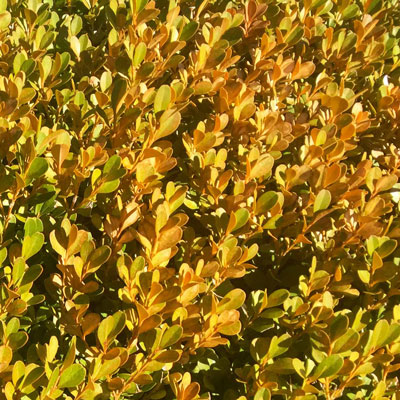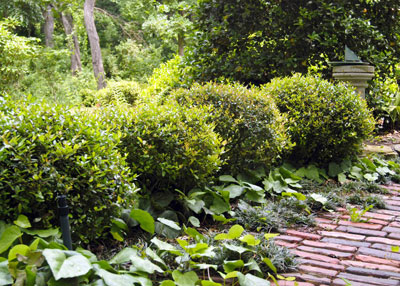Question of the Week: February 1, 2018
“Neil, why has my Japanese boxwood turned bronze-colored over the past several weeks?”
People fear that they’ve let their plants get too dry or that they might be diseased. But neither is the real reason.

Photo: Boxwoods have turned bronze all across the northern half of the state in the past several weeks. This is how they look when viewed up close.
Common Japanese boxwood (Buxus microphylla japonica) is the one that’s most commonly planted. Perhaps that’s because it’s the one most quickly grown and commonly sold by national chain stores. But one of its shortcomings in the northern half of the state is that it frequently turns yellowy-bronze following extremely cold weather like many of us faced in January.

Photo: Row of boxwood in McKinney, as photographed earlier this week.
A selection called ‘Green Beauty’ tends to holds its color better after the cold, and a related species selection called ‘Wintergreen’ is better still. But the good news is that the bronzing will go away as new growth replaces the old foliage in a few weeks. This is not a serious threat to your plants.

Photo: This is how bronzed boxwoods will look by later this spring.

Photo: Dwarf yaupon hollies make excellent low, bordering shrubs for sun or shade. They are a good alternative to Japanese boxwoods whenever you feel the need.
Dwarf yaupon holly gives much the same look without any risk of the bronze coloration. It’s also better adapted to shade. But boxwoods tend to grow a little more upright if that’s a growth form you need.
If you’re planting new shrubs this spring, talk to your local independent retail garden center operator about the best option for your specific needs.
